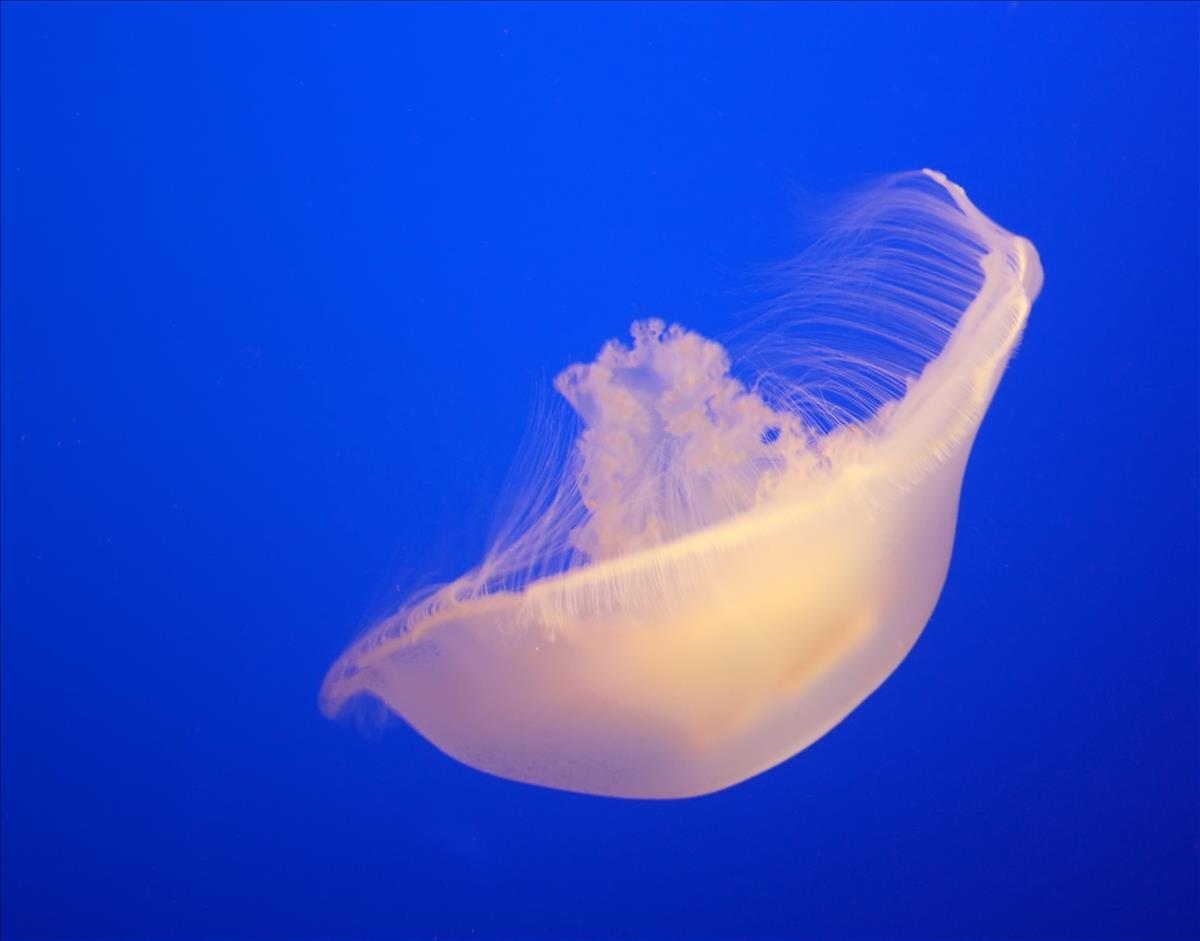Moon jellyfish
Aurelia aurita
Jellyfish are ancient creatures. Fossils have been found in rocks that are 650 million years old. Today there are more than 2000 species. Jellyfish are 95% water, 3% protein, and 1% mineral. There are four life stages from birth to adult. There is no backbone, brain, or heart. Adults drift with the currents, but can swim horizontally by pulsations of the bell to keep close to the surface. A primitive nerve net controls muscle contractions as it swims. The adult form is a transparent bell shape that ranges between 5 and 40 cm wide. Underneath is a central mouth surrounded by four oral arms that carry the stinging tentacles. From above, four crescent shaped gonads surround the mouth. On the rim of the bell are eight sets of eye spots sensitive to light and eight statocysts that help orient jellyfish when swimming. Jellyfish are primitive organisms with an outer layer (ectoderm) that covers the external surface and an inner layer (endoderm) that lines the gut. Between these is a jelly layer or mesoglea. The simple digestive cavity acts as a gullet, stomach, and intestine. There is one opening between the oral arms that acts as a mouth, anus, and entrance for sperm (in females).
Conservation Status: IUCN

Distribution
Atlantic, Pacific, and Indian oceans.
Habitat
Shallow coastal waters as well as brackish waters with a salt content as low as 0.6 %. Jellyfish can survive in water from 6 ˚C to 31 ˚C. The optimum temperature is 9 ˚C to 19 ˚C.
Diet
Jellyfish are carnivorous plankton eaters. They feed on fish eggs and larval fish and other plankton, such as mollusks, crustaceans, and copepods etc. Food is collected on the mucus surface of the jellyfish and by the tentacles. Flagellar action of the tentacles passes the food items to the margin of the bell and then up into the mouth and stomach.
Reproduction
Jellyfish are either male or female. Sexual reproduction begins when a male medusa releases sperm through its mouth. The sperm swim into the mouth of a nearby female where fertilization occurs. Further development into free swimming planula (larval stage) occurs in brood pouches along the oral arms. The planula settle on the ocean floor and attach to the bottom forming the polyp. Polyps bud asexually to produce free swimming larvae known as ephyra, which grow into the adult medusa.
Adaptation
The transparent body makes a jellyfish less visible to predators. Oral arms have tentacles that carry nematocysts (stinging cells) that stun prey or deter predators. About 70 species are harmful to humans. The medusa can shrink in size when food is scarce and grow when it is abundant. Radial symmetry permits finding food in any direction.
Threats to Survival
Predators include sea turtles, ocean sunfish, spade fish, tuna, swordfish, and other large fish. Humans, particularly in some Asian countries, capture and eat dried non-venomous jellyfish.


